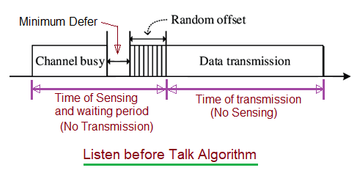Mobileye Technology: Collision Avoidance and Autonomous Driving
Advertisement
Mobileye, an Intel company, is a global leader in the development of computer vision, machine learning, data analysis, localization, and mapping technologies. These technologies are primarily used for Advanced Driver Assistance Systems (ADAS) and autonomous driving solutions. Mobileye specializes in developing advanced driver-assistance systems (ADAS) and technologies for autonomous driving.
One of the core components of their system is computer vision technology. Let’s dive into how Mobileye’s collision avoidance system works and its key components.
Mobileye Collision Avoidance System Explained
The Mobileye collision avoidance system relies on a few key elements to function:
-
Computer Vision Technology: Mobileye’s system heavily relies on computer vision. This means it uses cameras and sophisticated image processing algorithms to “see” and understand the surrounding environment. Cameras installed on the vehicle capture real-time images and videos of the road and everything around it.
-
Object Detection and Recognition: The system uses advanced algorithms to detect and recognize objects like vehicles, pedestrians, cyclists, road signs, and lane markings. It analyzes the visual data to determine the position, speed, and trajectory of these objects.
-
Collision Warning and Prevention: Once objects are detected and their paths predicted, the system assesses the risk of a collision. If a potential collision is detected, Mobileye provides warnings to the driver using visual and auditory alerts. In some cases, the system can also initiate automatic braking or other interventions to prevent or lessen the impact of a collision.
-
Integration with Autonomous Driving: Mobileye’s technology is often integrated into the broader ecosystem of autonomous driving systems, serving as a crucial component for enhancing safety and reducing the reliance on human intervention.
What is LIDAR and How Does It Compare?
Light Detection and Ranging (LIDAR) is another sensing technology used in autonomous driving systems. It complements camera-based systems like Mobileye.
While Mobileye primarily uses cameras, LIDAR uses laser beams to create a detailed, three-dimensional map of the surroundings. LIDAR is particularly effective in low-light conditions or when visual data alone isn’t enough.
Benefits of Mobileye’s Collision Avoidance System
Mobileye’s collision avoidance system offers several benefits that contribute to enhanced safety and a better driving experience:
-
Early Collision Warnings: It provides early warnings to drivers about potential collisions with other vehicles, pedestrians, or obstacles. This allows drivers to react quickly, reducing the chance of accidents.
-
Lane Departure Warning: Mobileye includes a lane departure warning system that alerts drivers if they unintentionally drift out of their lane.
-
Forward Collision Warning: The system can detect the risk of a forward collision with the vehicle ahead and provides warnings, giving the driver time to take corrective actions.
-
Automatic Emergency Braking: In certain situations, Mobileye’s collision avoidance system can initiate automatic emergency braking to mitigate or prevent collisions, even if the driver doesn’t respond to warnings.
-
Adaptive Cruise Control Support: Mobileye supports adaptive cruise control, which adjusts the vehicle’s speed based on traffic conditions, maintaining a safe following distance from the vehicle in front.
-
Enabling Autonomous Driving: Mobileye’s technology plays a crucial role in the development of autonomous driving systems.
-
Increased Driver Awareness: The system helps increase driver awareness by providing real-time information about the surrounding environment, potential hazards, and the vehicle’s position on the road.
Conclusion
In summary, Mobileye’s collision avoidance system primarily relies on computer vision using cameras, while LIDAR provides additional sensing capabilities to enhance the overall perception and safety of autonomous driving systems. The combination of these technologies aims to create a comprehensive and reliable solution for navigating complex environments.
Advertisement
 RF
RF


